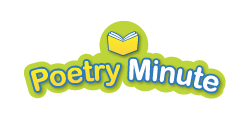
If you’ve ever listened to a child labor through a book, sounding out word after word, you know how much effort goes into decoding. For young readers, so much mental energy is spent just figuring out the words on the page that there’s little left for fluency, expression, or comprehension. That’s where audiobooks can make a huge difference. Far from being “cheating,” listening to books is one of the best ways to help children grow into strong, confident readers.
Listening Isn’t “Cheating”—It’s Reading with Ears Instead of Eyes
One of the most common concerns I hear from parents and teachers is: “But listening isn’t real reading.” Let’s put that myth to rest. Reading is about making meaning from words. Whether those words come through the eyes or through the ears, the brain is still doing the work of comprehending, interpreting, and imagining.
Think about how many adults listen to audiobooks on their commute, or how students in literature classes listen to Shakespeare performed on stage. Nobody would accuse them of not “really” reading. For kids, especially, audiobooks provide a way to experience the richness of language without the mechanical hurdle of decoding every word.
Instead of being a shortcut, audiobooks act as a scaffold. Children get to hear fluent reading modeled for them: the rise and fall of sentences, the way characters sound different from one another, the pauses that make meaning clear. Those patterns sink in and help children internalize what fluent reading should sound like.
Exposure to Advanced Vocabulary
Another huge benefit of audiobooks is that children can listen to books years ahead of what they can decode on paper. A third grader might not yet be able to independently read a 400-page fantasy novel, but they can listen to it, and enjoy it, right now.
This early exposure gives them access to complex vocabulary, advanced sentence structures, and sophisticated storytelling long before their own decoding skills catch up. When those same words show up later in print, they’ll already be familiar. Recognizing vocabulary by ear first makes it much easier to recognize it with the eyes later.
In other words, audiobooks let kids “grow into” reading by building a mental storehouse of words, phrases, and ideas that will eventually transfer to print.
Building Fluency Through Modeling
Fluency is one of the cornerstones of reading: the ability to read smoothly, accurately, and with expression. It’s not just about speed—it’s about rhythm, phrasing, and understanding. Kids don’t develop fluency by accident; they develop it by hearing fluent models.
Audiobooks provide those models. Professional narrators—people like Jim Dale, who famously voiced all seven Harry Potter books—demonstrate how language should flow. They emphasize the humor in a funny passage, heighten the suspense in a mystery, and make dialogue sound like real conversation. Listening to those performances gives children a template for how they should read aloud themselves.
While my wife and I read to our children every night from the time they were born, as the stories they liked got longer and longer, it would take a toll on our voices. Even after my voice would give out, Jim Dale would keep on reading. That’s no small thing. Audiobook narrators bring stories to life in a way that even the most enthusiastic parents and teachers sometimes can’t sustain day after day.
Reducing Screen Time While Expanding Access
Another practical advantage of audiobooks is that they reduce screen time. In a world where children are surrounded by tablets, phones, and streaming platforms, audiobooks offer an alternative that exercises the imagination without a glowing rectangle.
Instead of passively consuming images, kids listening to audiobooks create their own mental pictures. They imagine the castle, the spaceship, or the dragon based on the words they hear. That active visualization is a key part of becoming a thoughtful, engaged reader.
Audiobooks are also portable and flexible. Kids can listen in the car, on a walk, during quiet time, or even before bed. They fit into daily routines in ways that don’t require more screen time or more parental energy.
If you’re wondering how to get started with audiobooks, my favorite option is Audible. It has the largest library of children’s titles, from classics to brand-new releases, all read by some of the best narrators in the world. If you subscribe through this link, Audible will help support Poetry4kids, which helps me keep bringing you new poems, activities, and resources for your kids.
Bridging the Gap Between Struggling and Enthusiastic Readers
For struggling readers, audiobooks can mean the difference between hating books and falling in love with them. A child who can’t yet decode at grade level can still keep up with the classroom novel if they listen along. They can participate in discussions, understand the plot, and feel the excitement of the story rather than just the frustration of the text.
For enthusiastic readers, audiobooks simply expand the possibilities. Kids who devour books on paper can also listen to them while they’re doing chores, riding in the car, or just resting their eyes. The more access children have to stories, the more their literacy grows.
Practical Tips for Parents and Teachers
If you’d like to start using audiobooks with your children or students, here are a few ideas:
- Pair listening with reading. Let children follow along in the print version while they listen. This helps connect the spoken and written word.
- Encourage repeated listening. Just like rereading, listening more than once builds familiarity and confidence.
- Mix levels. Offer some audiobooks that match their current reading level and others that are more advanced to stretch vocabulary.
- Make it routine. Audiobooks before bed, during car rides, or at quiet time make reading a natural part of daily life.
- Don’t forget the library. Most public libraries offer audiobooks on CD, and many libraries now offer them as digital, downloadable check-outs as well.
The Bigger Picture: A Love of Stories
At the end of the day, the goal isn’t just fluency; it’s a love of stories. Children who associate books with adventure, laughter, suspense, and wonder are the ones who will grow up to be lifelong readers. Audiobooks open that door wider.
They let children enjoy the magic of language before their decoding skills catch up, give them models of fluent expression, and expand their vocabulary far beyond what they could reach on paper alone. And they do it while giving tired parents a break and reducing the tug-of-war over screen time.
So the next time someone says listening “isn’t real reading,” you can remind them: listening to stories is how all of us began learning language in the first place. Audiobooks aren’t a replacement for reading; they’re a powerful companion. They make books accessible, joyful, and unforgettable for kids at every stage of their reading journey.
P.S. If you’d like to give audiobooks a shot, a trial subscription to Audible is a great way to start, and every subscription through this link helps me keep Poetry4kids going strong.
- Our Brand-New TV - December 15, 2025
- Weekly Children’s Poetry Roundup – Saturday, December 13, 2025 - December 13, 2025
- Snow’s Nose - December 8, 2025






